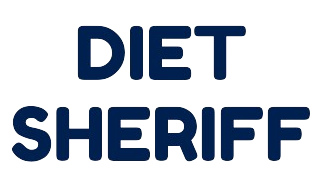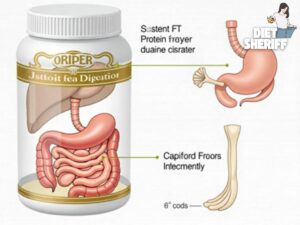If you’re on a quest for a healthier lifestyle or trying to bulk up those muscles, you’ve probably heard the buzz about protein powder. But wait, can you put protein powder in smoothies? Absolutely! In fact, it’s one of the most popular ways to use protein powder.
Tossing a scoop (or two) of your favorite protein powder into a smoothie is an effortless way to amplify the drink’s muscle-building prowess. This comprehensive guide will delve deeper and explore the wonderful world of protein-boosted smoothies. So, let’s dive right in.

Why Add Protein to Your Smoothie?
We all know protein is a key building block for strong muscles, but it also plays a crucial role in overall health. Getting enough protein aids in weight management, boosts metabolism, improves immunity, and helps you feel fuller longer.
The sad truth? Most people don’t get their recommended daily intake. That’s where protein powder smoothies come in clutch. They offer a simple way to close that protein gap.
Just look at the stats:
- 64% of women over age 20 don’t meet their protein needs
- Only 38% of men over 20 get enough protein daily
- The average adult needs 46-56 grams of protein per day
By throwing a scoop or two of protein powder into your morning blend, you could easily meet 25-50% of your protein goal for the day! Now that’s a nutritious way to start things off.
Related Articles: Can You Make Protein Shakes with Milk? A Comprehensive Guide
How Does Adding Protein Powder Affect the Texture and Flavor of Smoothies?
Adding protein powder to your smoothie can have a significant impact on both its texture and flavor. Let’s break it down:
When it comes to texture, protein powder can sometimes make your smoothie thicker or grittier. This can be off-putting for some people, especially if they’re not used to the texture of protein powder.
As for flavor, protein powder can add a subtle or sometimes not-so-subtle taste to your smoothie. Some protein powders are designed to be flavorless or have a neutral taste, while others may have strong flavors like chocolate, vanilla, or fruity undertones.
Keep this in mind when selecting your protein powder and consider how it will complement the other ingredients in your smoothie. You may need to adjust the sweetness or acidity of your smoothie to balance out the flavor of the protein powder.
Choosing the Perfect Protein Powder for Smoothies
With a dizzying array of protein powders on the market, selecting the right one for your smoothies can feel overwhelming. Here’s a breakdown of the most common types to help you navigate the sea of options:
Related Articles: How Long Can a Protein Shake Last in the Fridge?
Whey Protein
The most popular choice, whey protein is a fast-absorbing protein derived from milk. It’s ideal for post-workout recovery and muscle building.
Casein Protein
Another milk-derived protein, casein digests slower than whey, making it a great option for a sustained feeling of fullness and nighttime muscle recovery.
Soy Protein
A plant-based alternative, soy protein is a complete protein source, meaning it contains all nine essential amino acids. It’s perfect for vegans, vegetarians, and those with lactose intolerance.
Pea Protein
Another plant-based option, pea protein is hypoallergenic and easily digestible, making it a good choice for those with sensitive stomachs. While not a complete protein, it can be combined with other plant-based proteins for a more complete amino acid profile diet sheriff.
Brown Rice Protein
Another hypoallergenic and vegan-friendly option, brown rice protein is a good source of fiber and blends well in smoothies. However, it’s not a complete protein source on its own.
You’ll find powders in all sorts of tantalizing flavors from chocolate and vanilla to peanut butter and cake batter. Many are even specially formulated for smoothie-making.
Consider your dietary needs, taste preferences, and budget when making your choice. Don’t hesitate to experiment with different types to find the perfect protein powder for your smoothie symphony.
How to Make the Perfect Protein Smoothie Recipes?
Creating the perfect protein smoothie recipe is both an art and a science. It’s about combining the right ingredients for both flavor and nutrition. Here’s how you can whip up a protein smoothie that’s both delicious and nutritious.
1. Start with a Liquid Base: Choose a liquid that complements your dietary preferences
- Almond milk
- Soy milk
- Coconut water
- Cow’s milk
2. Pick Your Protein: Select a protein powder that suits your health goals
- Whey or casein for muscle building
- Plant-based for a vegan option
3. Add Fruits and Vegetables: For sweetness and nutrients, add fruits and veggies like
- Bananas for creaminess
- Berries for antioxidants
- Spinach or kale for greens
4. Include Healthy Fats: Healthy fats are essential for hormone production
- Avocado
- Nut butters
- Chia seeds
Related Articles: Can You Put Protein Powder in Hot Drinks? The Ultimate Guide
5. Sweeten It Up (Optional): If you need extra sweetness, consider
- Honey
- Maple syrup
- Dates
6. Boost with Extras: Enhance your smoothie with superfoods
- Flaxseeds for fiber
- Cacao for antioxidants
- Oats for fullness
7. Ice and Blend: Add ice to chill, then blend until smooth. Adjust the thickness by adding more liquid or ice as needed.
8. Taste and Tweak: Give it a taste and adjust the ingredients to your liking. More sweetness? Add a date. Too thick? Pour in some more almond milk.
9. Serve and Enjoy: Pour your masterpiece into a glass, top with a sprinkle of seeds or nuts, and enjoy the perfect protein smoothie!
What Benefits Might Result from Combining Protein Powder with Smoothies?
Combining protein powder with smoothies packs a powerful nutritional punch that can yield some impressive benefits. Adequate protein supports muscle growth, aids in weight management, boosts metabolism, and increases feelings of fullness.
Related Articles: Can You Put Protein Powder in Smoothies for Enhanced Nutrition?
Smoothies themselves are also a fantastic way to load up on vitamins, minerals, antioxidants, and fiber. By mixing protein powder into the blend, you’re amplifying the meal’s overall nutritional value in one simple step.
For athletes or those looking to build lean muscle, protein smoothies provide ideal nutrition for recovery and repair. The liquid meal is easy on the digestive system while rapidly delivering amino acids to start replenishing depleted muscle stores.
Overall, the combo creates a balanced, nutrient-rich meal or snack that’s truly greater than the sum of its parts. And it’s a convenient way to nourish your body right.
So, can you put protein powder in smoothies? Yes, adding protein powder to smoothies is a total no-brainer move. It instantly transforms your fruity beverage into a macro-balanced meal or snack to power you through your day. And it couldn’t be easier to do!
Remember, a protein-packed smoothie is more than just a tasty treat – it’s a nutritional investment in your body’s overall health and performance. So, grab your blender, scoop in that protein powder, and let the smoothie-making adventures begin!
Explore Also:
Creativehouseblog
Gigasecurehome
Mycleanseplan
Can You Put Protein Powder in Smoothies – FAQs
What types of protein powders work best in smoothies?
The most popular and smoothie-friendly protein powders are whey, casein, plant-based (like pea, soy, or brown rice), and blends. Look for powders that are easily dissolvable and don’t leave a chalky aftertaste.
Is protein powder necessary for smoothies?
No, protein powder isn’t mandatory for smoothies. However, protein powder offers a convenient way to significantly boost the protein content of your smoothie, making it more filling and potentially aiding muscle building or recovery.
Will adding protein powder make my smoothie thick and gritty?
Not if you do it right! Thoroughly blending the powder with liquid first is key to smooth, lump-free texture. Using frozen fruit or Greek yogurt also helps create a thick, creamy smoothie.
Can I use protein powder as a meal replacement?
Smoothies can be a convenient meal-on-the-go, yes. Just be sure to balance out your protein with healthy fats, fiber, fruits and veggies for a complete meal. Protein powder alone doesn’t provide all the nutrients your body needs.
Can kids have protein powder in smoothies?
You bet! Protein powder smoothies can be a fantastic way to sneak in high-quality protein and nutrients for active, growing kids. Just adjust portions based on their age/body weight and be mindful of any allergies.






